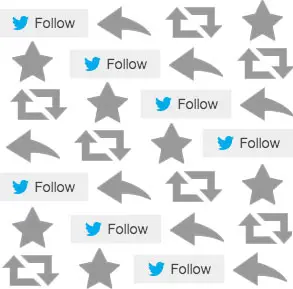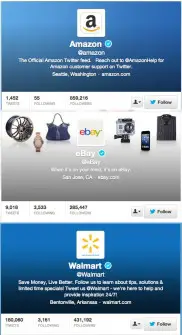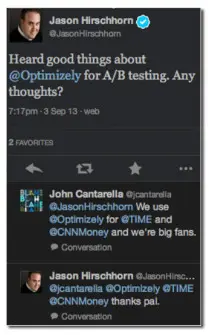Test Idea: Experiment with How You Engage Your Social Media Following
While doing some research into the social media presence of brands who topped the online shopping charts on Cyber Monday 2013, I observed an interesting fact.


Most of them have hundreds of thousands of Twitter followers but are only following a couple thousand or even less.

At time of writing, Amazon has the lowest ratio of following to followers, 55:859,216. eBay is following 3,533 and has 285,447 followers. Walmart is noteworthy for its volume of tweets. It has 431,192 followers, is following 3,161 and 180,060 tweets—20 times more than eBay and 124 times more than Amazon.
I wonder what would happen to to sales if they started following more of their followers? In October 2013, Wired wrote about Twitter’s potential for e-commerce dominance and stated that “As of 2013, 30% of eCommerce purchasers were influenced by social media content from friends. In addition to Tweeted purchases, an increasing number of consumers are also resorting to a brand’s Twitter account to reach customer service, learn about deals, and engage in product promotions.”
Knowing that there is some correlation—even if it is slight—between social media engagement and sales, it warrants brands experimenting with how they interact with their followers.
Here’s an A/B test idea: experiment with how you engage your Twitter followers.
Try following your followers who have mentioned you in the past couple months, or the ones who haven’t. Try replying to or retweeting people who mention your brand.
You can quantify success in these experiment in various ways. One is referral traffic to your website from Twitter. To measure referral traffic, add “utm source=twitter” to any link you Tweet out. In your analytics tool, you can see the percent of traffic that came from Twitter links. Make sure you benchmark referral traffic before embarking on a follow tirade. If traffic from twitter increases, you know you’re doing something right.
You can then measure conversion rates on your Twitter traffic segments. What percentage of traffic that clicked a Twitter link actually buy something?
Another measure of success is NPS, net promoter score. How likely is someone to refer your brand to a friend if you are following him or her?
Experiment with the ways you interact with and follow your own following.
If you don’t, you might miss two executives like these talking about your brand.

